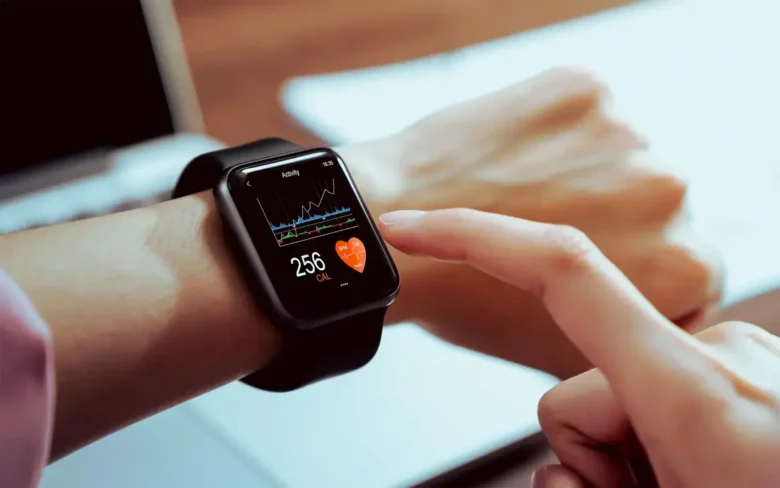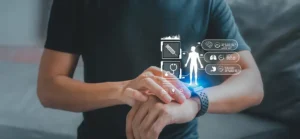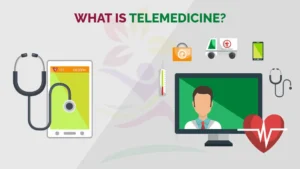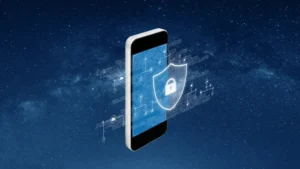Sensor-based digital devices that gather information for patients and healthcare teams. Examples of such devices include biosensors such as glucose monitors, which remove the need for frequent finger pricking to help manage diabetes patients more effectively. These tools assist patients by encouraging healthier behavior and providing real-time monitoring of personal health status, as well as alerts for any issues that require immediate action.
1. Empowering Patients
Consumer wearables provide individuals with an easy way to track health metrics such as blood pressure, glucose levels, and heart rate, helping them take an active approach towards healthcare and thereby improve outcomes overall.
Fitness trackers help individuals lead healthier lifestyles by providing motivational feedback based on activity level and peer comparison, but barriers such as technical difficulties or privacy concerns may limit usage. Keeping track of health metrics all the time helps patients notice any unusual changes early, which can reduce the need for regular doctor visits and ease the pressure on healthcare services.
2. Personalized Health Data
Wearable devices that target patient health can be powerful tools in helping individuals take control of their healthcare. Wearables offer noninvasive and privacy-protecting alternatives to more invasive diagnostic procedures, like ECGs that involve stripping the skin [90].
Many wearables are designed to promote behavioral change through actionable insights and notifications that encourage healthy habits, like encouraging patients to exercise, eat better, and sleep at an ideal time. Wearables also enable self-monitoring, which reduces resource-intensive assessments such as those found in ICUs or medical surgery units, reducing workflow burden and resource consumption for resource-intensive workflows such as ICUs.
3. Remote Observation
Medical-grade wearables such as continuous glucose monitors and ECGs blur the line between fitness trackers and healthcare devices, providing real-time data to diagnose conditions like high blood pressure or abnormal heart rhythms, thereby decreasing emergency events and facilitating proactive disease management in outpatient and hospital settings.
Privacy concerns, technical challenges, and lack of tailored advice may dissuade wearable users from making long-term use a priority, resulting in low levels of self-efficacy. We must address these barriers to achieve widespread adoption.
4. Early Diagnosis
Wearable devices offer real-time monitoring of various health metrics. This continuous surveillance can identify issues such as changes to heart rate, blood pressure fluctuations, and sleep patterns, which might signal early indicators of illness or disease.
These devices can help identify early symptoms of sepsis or infection. Hospital-grade wearables also often feature sensors for various medical uses, such as electrocardiograms, temperature probes, and oxygen saturation sensors. However, the information collected by these devices can often be difficult to access as users opt-in to general medical studies that do not fall under clinical trial regulations.
5. Data-Driven Decisions
Wearable devices offer individuals invaluable health data, empowering them to take an active role in managing their health and well-being. Patients can use wearable devices to monitor a wide variety of vital physiological signals, such as heart rate, movement patterns, and sleep cycles.
Some devices can also detect early warning signs of infectious diseases. The COVID-19 pandemic saw an explosion of wearable devices designed to monitor breathing patterns and flag symptoms like fever or fatigue, prompting wearable monitors. Specialized healthcare wearables can track complex clinical metrics such as ECGs (electrocardiograms) and blood pressure measurements, most typically embedded in adhesive smart patches, wristbands, or chest straps that connect to a mobile app or medical dashboard for monitoring purposes.
6. Preventive Care
Wearable healthcare devices have quickly become an indispensable resource, helping prevent and detect diseases by continuously monitoring vital signs and providing data-driven decisions across clinical workflows. Smart glucose monitors for diabetes patients, ECG patches for cardiac patients, and seizure-detection headbands for epilepsy patients all collect real-time health data and alert patients and their care teams about any alarming trends in real time.
Consumer-grade wearables have become an increasingly popular way of tracking health; however, clinicians must exercise caution in their use. Individuals not aligned with their motivational profile may become demoralized when pitted against peer comparisons [81]. Conversely, hospital-grade wearables linked to mobile apps or clinical dashboards help ensure real-time data reporting to care teams.
7. Remote Monitoring
Wearable devices provide remote monitoring and proactive disease management. Examples of wearable devices are fitness trackers, smartwatches, and medical devices such as glucose monitors for diabetic patients, ECG patches for cardiac patients, and seizure-detection headbands for those living with epilepsy; many such specialized medical devices pair with mobile apps that offer real-time monitoring alerts so patients can share data with care teams to reduce hospitalizations and chronic disease costs.
These features of wearable devices offer significant potential to transform healthcare and empower individuals to take greater control of their own health, but some barriers—including technical challenges and perceived inaccuracies—prevent their adoption.
8. Connected Health
Telemedicine helps individuals and health systems by decreasing hospital visits, and through connected health helps individuals better consider diet, lifestyle, and hereditary factors when setting health goals. This approach also has benefits for illness prevention.
Fitness trackers such as the Apple Watch Series 9 can be powerful motivators to practice healthier behaviors through daily step challenges and goal setting. Furthermore, these devices can detect falls and irregular heart rhythms, providing users with timely alerts that allow for timely intervention. Wearable devices should be utilized to empower individuals, taking into account sources of self-efficacy. Demotivation or negative emotions may discourage use; thus, designing devices according to individual motivational profiles must take place for maximum effect.
9. Surgical Patient Experience
Medical-grade wearables combine electronic devices, software, and sensors to monitor and assess various metrics. The data gathered can then be shared remotely with clinicians as well as directly with patients for self-monitoring and health promotion purposes.
Surgery patients could benefit from receiving more information regarding their symptoms and signs of deterioration and being able to track their progress from home after discharge. However, for some individuals, this information could be demotivating or discouraging. Further research must be conducted to ascertain the efficacy of new technologies, gathering both short- and long-term data that demonstrates improved patient outcomes and reduced healthcare costs.




